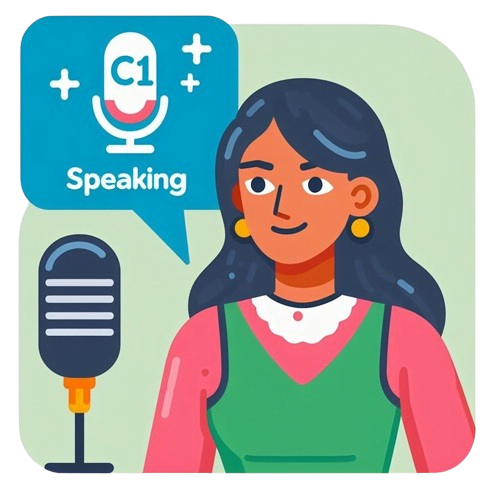C1 Advanced Writing Part 2: The Comprehensive Guide
What you will find in this guide:
Your Options in C1 Advanced CAE Writing Part 2
The C1 Advanced (CAE) Writing part 2 offers a choice of tasks. This is where your versatility in writing comes into play. You will be given a choice of three tasks, and you need to select one. The tasks could be an email/letter, proposal, report, or review.
Each task requires a different style of writing and a different approach. Understanding the required functions, grammatical structures, vocabulary, and register for each task is crucial. This is where your comprehensive knowledge of English writing comes into play.
The word count for this part is also 220–260 words. Just like in Part 1, it’s important to stay within this limit. This demonstrates your ability to express your ideas concisely and effectively.
Choosing the right task is key to acing this part of the paper. Select the task that best suits your skills and the one you feel most comfortable with. Remember, each task is an opportunity to showcase your writing skills, so choose wisely.
Once you’ve chosen your task, plan your response carefully. Understand the prompt, brainstorm ideas, and outline your response. This will help you write a focused and coherent piece of writing.
Potential Challenges
Writing Part 2 of the Cambridge C1 Advanced (CAE) Writing Paper can present several challenges. Here are some potential difficulties you might encounter:
Choice of Task: With three different tasks to choose from, deciding which one to tackle can be daunting. Each task requires a different style of writing and approach, which can be challenging if you’re not familiar with all the formats.
Understanding the Task: Each task has its own specific requirements. Misunderstanding the task can lead to a response that doesn’t meet the criteria, which can significantly impact your score.
Word Count: The word count for Part 2 is 220–260 words. Staying within this limit while ensuring you’ve fully addressed the task can be tricky. Overwriting can lead to unnecessary complexity, while underwriting might mean missing key points.
Time Management: With only 1 hour 30 minutes for both parts of the paper, managing your time effectively is crucial. Spending too much time on Part 1 can compromise your performance on Part 2, and vice versa.
Language Use: Part 2 tests your ability to use a range of language functions, grammatical structures, and vocabulary. This can be challenging if you’re not comfortable with the breadth of language required.
Register and Tone: Each task requires a different register and tone. For example, a formal tone is required for a proposal, while a more personal tone might be appropriate for an email. Misjudging the register and tone can lead to a response that doesn’t fit the task.
Remember, these challenges can be overcome with practice and preparation. Understanding the potential difficulties can help you prepare more effectively and ace the CAE Writing Paper Part 2.
Understanding the Writing Rubric in CAE C1 Advanced
The Cambridge C1 Advanced Writing paper is scored based on four key criteria1:
- Content: This assesses how well you have fulfilled the task, if all the content is relevant to the task, and if the target reader is fully informed.
- Communicative Achievement: This checks if the writing is appropriate for the task, if it uses the right register and tone, and if all the points are communicated effectively.
- Organisation: This looks at the way the text is organised, if it uses the right conventions of the communicative task, and if the text is coherent and cohesive.
- Language: This assesses the range of vocabulary and grammatical structures, the level of accuracy in their use, and the appropriateness of the language to the task.

Step-by-Step Guide to Writing Part 2
Here’s a step-by-step guide on how to approach Part 2 of the Cambridge C1 Advanced (CAE) Writing Paper:
Understand the Task: Start by reading the task carefully. Make sure you understand what is being asked and what type of response is required (email/letter, proposal, report, or review).
Choose the Task: Out of the three tasks given, choose the one that best suits your skills and the one you feel most comfortable with. Remember, each task requires a different style of writing and approach.
Plan Your Response: Before you start writing, take a few minutes to plan your response. Understand the prompt, brainstorm ideas, and outline your response. This will help you write a focused and coherent piece of writing.
Write the First Draft: Start writing your response based on the outline. Make sure to stay within the word limit of 220–260 words. Use a range of language functions, grammatical structures, and vocabulary appropriate for the C1 level.
Review and Revise: After writing the first draft, take some time to review and revise it. Look for any grammatical errors, unclear sentences, or points that could be better expressed. Make sure your response is well-structured and coherent.
Check the Register and Tone: Ensure that the register and tone of your response are appropriate for the task. For example, a formal tone is required for a proposal, while a more personal tone might be appropriate for an email.
Finalize Your Response: After revising, finalize your response. Make sure it fully addresses the task and is within the word limit.
Sample Question
Write an answer to one of the questions 2 – 4 in this part. Write your answer in 220 – 260 words in an appropriate style on the separate answer sheet.
2. There are plans to demolish an old and unused building in the town where you are a student. You feel that the building should be saved. You decide to write a proposal for the town council explaining why you think the building should be preserved, suggesting what could be done to modernise it and saying how the building could benefit the local people.
Write your proposal.
3. You have just finished a three-week study and work programme in an English-speaking country. You studied English language in the mornings and worked for a local company in the afternoons. The programme organiser has asked you to write a report about your experience. In your report, you should evaluate the programme, explaining which part of the programme was more useful, and suggest changes you would recommend for next year’s programme.
Write your report.
4. A travel website has asked you to write a review of a holiday resort you have been to, explaining what kinds of people the resort is likely to appeal to, and which aspects of the resort you would most recommend to other visitors. You should also suggest at least one way in which you feel the resort could be improved.
Write your review.
The Outline
- Preservation of historical value
- Modernisation for current needs
- Benefits to the local community
Language to Use
Vocabulary:
- Demolition
- Testament
- cultural heritage
- Revitalised
- Community spirit
- Adaptive reuse
Grammar:
- Modal verbs (could, would),
- Use of connectives (Firstly, Secondly, Lastly),
- Persuasive language (I propose, Let’s consider).
- Compound and Complex sentences
Sample Proposal
Proposal to Preserve and Modernise the Old Building
Dear Members of the Town Council,
I am writing to express my concern over the proposed demolition of the old building in our town, and propose the the building be revitalised. This building, despite its current state, holds significant historical value and potential for our community.
Firstly, the building is a testament to our town’s rich history. Its unique architectural style provides a glimpse into the past, making it an invaluable asset. Preserving it would maintain our cultural heritage, providing an educational resource for future generations.
Secondly, with thoughtful renovation, the building could be transformed into a multi-purpose facility. It could house a community center, a library, or even a local museum. This would not only preserve the building but also adapt it to the needs of our modern society.
Lastly, the revitalised building could become a hub for local activities, fostering community spirit. It could host events, workshops, and exhibitions, attracting tourists and boosting our local economy.
In conclusion, I propose that we explore alternatives to demolition. Let’s consider engaging architects and conservation experts to assess the building’s condition and potential for adaptive reuse. This approach would allow us to preserve our town’s heritage while catering to our community’s evolving needs.
Yours sincerely,
[Your Name]
FAQ
The Writing paper of the Cambridge C1 Advanced exam consists of two parts: One Essay and one task where you can choose your task from given options.
You are required to choose one type of writing in the second task. Your options are: Writing a letter, an email, a proposal, a report, and a review.
The Writing paper is assessed based on your control of a range of language, correct use of grammar structures, specificity of words or structures to express your ideas, and the effective use of functional language to persuade, agree, or compare






